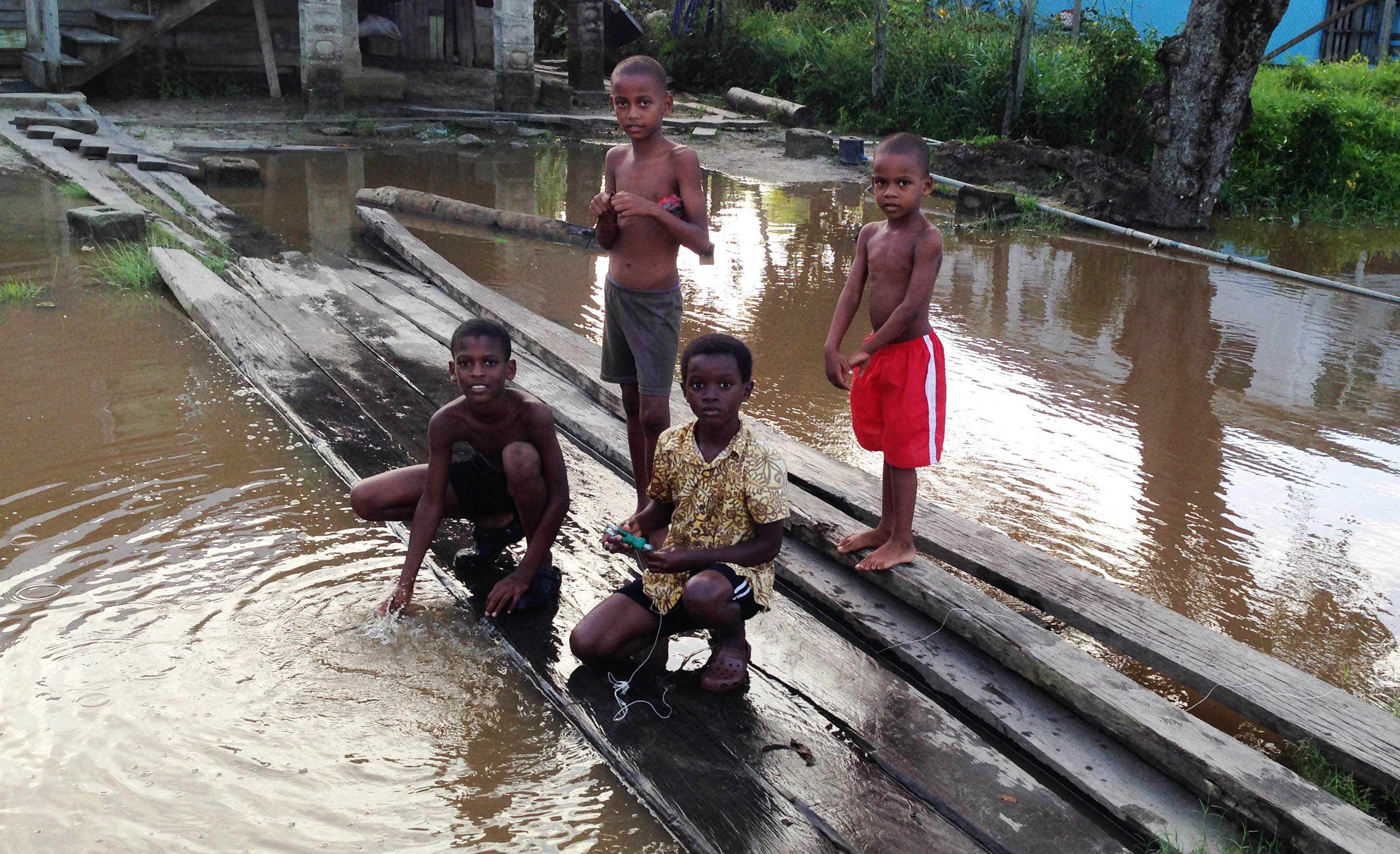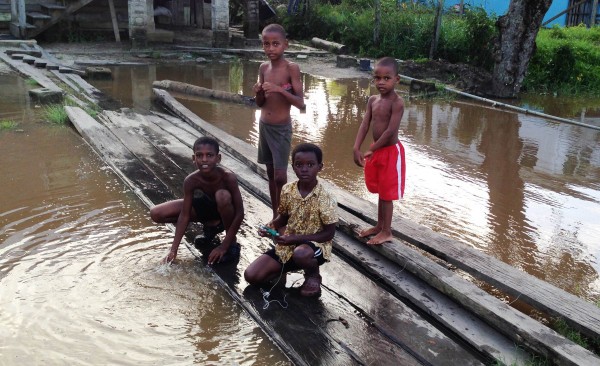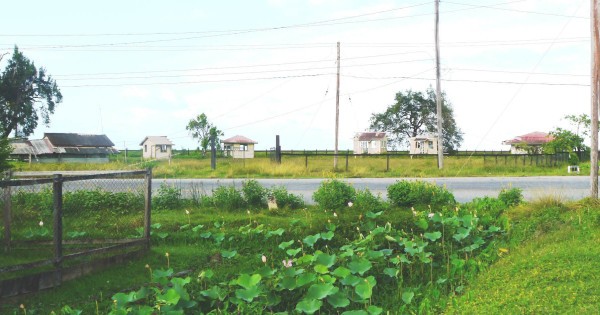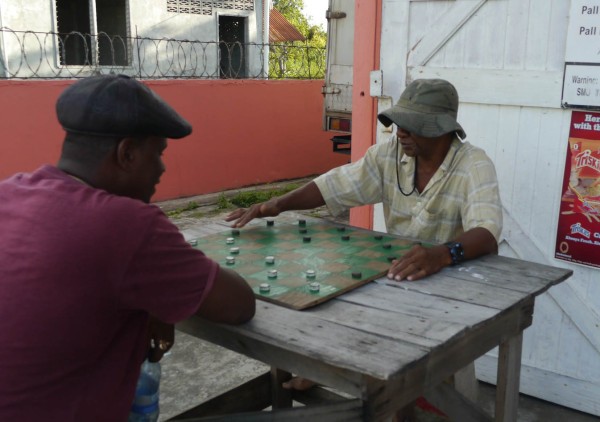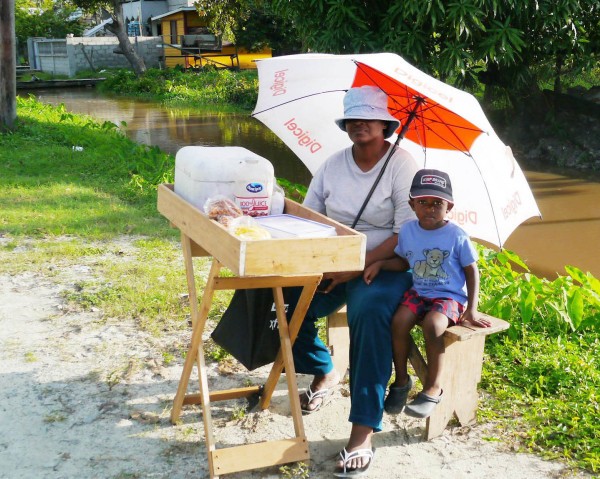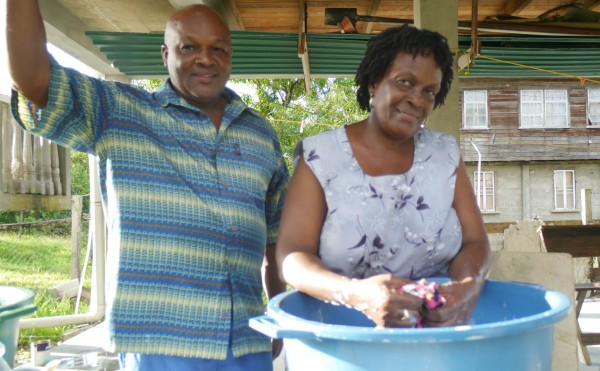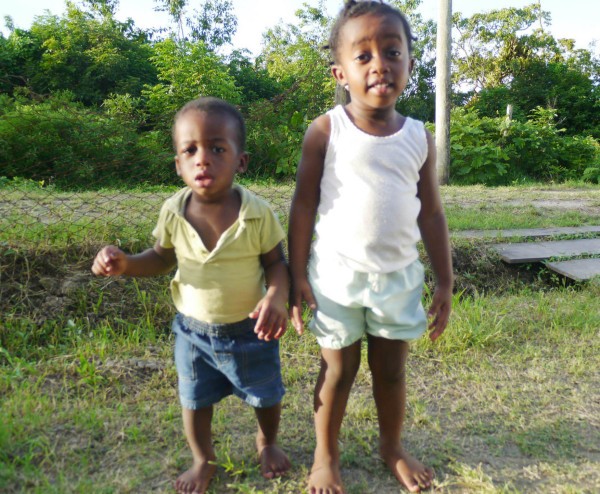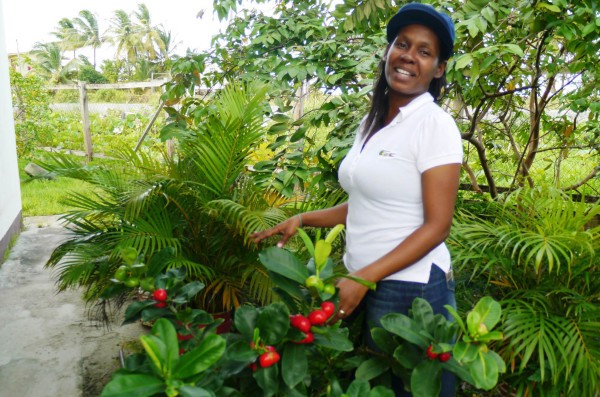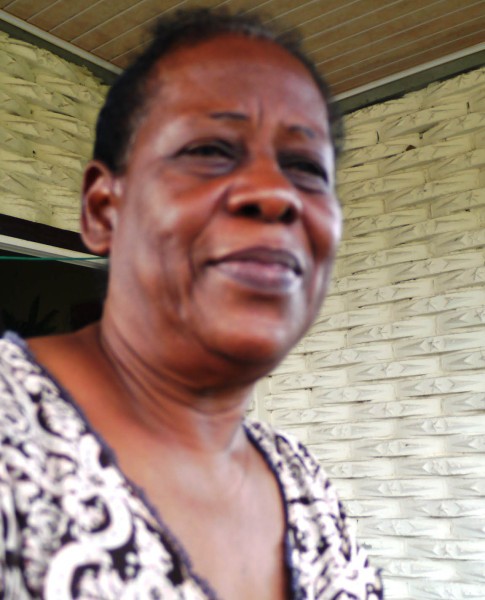Story and photos by Shabna Ullah
The friendly people of Fellowship, West Coast Demerara welcomed us warmly during an afternoon visit and were happy that their village would be featured in ‘The World Beyond Georgetown.’
They made it clear that the village was separate from Den Amstel, though many people would view the two villages as one, and they pointed out the boundary – a sideline trench..
Fellowship, a predominantly African-Guyanese village is bounded by Hague on the western side.
In 1846 Fellowship was bought for $6,000 by 83 ex-slaves who pooled their earnings. They include the Jacksons; ancestors of Sir Donald Jackson, the Vieiras, the Cummingses, the Jordans, the Henrys, the Greens, the Barts and the Pollards.
This portion of land stretched from the Atlantic Ocean to crown lands near the Boerasirie Conservancy. The crown lands at the back of Fellowship were bought in 1897 by four proprietors. On August 3, 1857, 35 out of 125 proprietors made representation to the Central Government Board.
Fellowship is home to government entities which have the name Den Amstel attached to them including the police station, the Mildred Cox Younge Health Centre, the National Agricultural Research and Extension Institute and the Sea Defences and Emergency Works Project office.
Some other places carry the name Fellowship, like the post office, Guyana Water Inc’s Water Treatment Plant and the Practical Instruction Centre (PIC).
There is a defunct agricultural centre which residents said can be restored and used by residents from the PIC for planting.
A building for the Regional Executive Office is located in the village but it is being occupied by a doctor.
Behind that is another government building where a computer centre is housed, while the principal of the Leonora Technical Institute resides in the flat above the health centre.
The village also houses the Neighbourhood Democratic Council office, a business school, a playschool and a few shops.
Residents said proudly that they have the “best seawall on the West Coast. We don’t have problems with erosion here, like in other villages” where huge boulders have been placed.
“The boulders prevent people from playing on the sandy shore but here we never had the cause to have boulders,” they said.
As a result they are able to play on the sand and swim in the inviting waters. Families would also go on the seawall for picnics on occasions like Easter Monday.
Apart from that residents said they have an issue with flooding due to poor drainage and would like it to be addressed.
They also called for the installation of speed humps so drivers can be more careful when using the streets.
The residents said too that street lights should also be installed in some sections especially where the GWI plant is located.
The village was equipped with street lights but about one and a half years ago a car hit one and it stopped working and a few months later the others stopped as well.
Camp site
The village has a camp site which had hosted churches and different organizations’ camping activities but sadly it has deteriorated over the years.
Residents would like the government to assist in “restoring it to its former beauty. Last year a contractor came and started the fence but it is still halfway because the money finish.”
The site consisted of eight to nine cabins but now there are only “five broken ones remaining.”
There is also the rundown mess hall as well as a dilapidated house at the site that is occupied by the caretaker who would sometimes weed the yard.
Residents boasted that the village has the best supply of [treated] water and that they enjoy drinking directly from their taps.
The only downside, they said is that the supply is not continuous and is cut off at intervals for a few hours. They also feel that GWI should provide a service where residents of other nearby villages can purchase the purified water.
Winifred Charles
Though willing to accommodate this newspaper and helpful to share information, some of the residents were too shy to have their photos taken including 87-year-old Winifred Charles.
The outspoken Charles has been living alone and not only cooks and does her household chores on her own but she takes care of her goats.
She has minor medical complaints that come with age but she said confidently: “I don’t take it on; I eat healthy and do what I have to do.”
She was born and grew up in the village and said “years ago it wasn’t as racially divided as it is now. Most of my neighbours were Indians and we used to live very nice.”
She said that a disturbance in the country during an election period had caused some of the Indian-Guyanese residents to move out.
Speaking about the good relationship they shared at the time, Charles said “when we had to go out we would call on each other to ‘watch dem pickney till me come back.’ That’s how we used to live.”
Her single mother struggled to raise her and her four siblings and she recalled that from their early days at school they started doing hard work.
Some mornings she woke up at 5 o’clock to go to Hague backdam to fetch bitter cassava for her mother to make cassava bread to sell. In the middays when she and her siblings returned home for lunch they had to grate the cassava and squeeze out the juice.
The next morning she would have to “walk and sell the cassava bread till at Windsor Forest. I used to holler ‘cassava bread, cassava bread’ and dem children used to tease me [by shouting back], ‘yuh mother dead, yuh mother dead,’” she chuckled.
Despite what work they had to do in the mornings, they could not be late for school. Looking back she said she did not mind doing the hard work at all because “it served me good in this time; it helped me to be independent.”
It also did not prevent her from performing well at school and she said proudly, “I was bright, but you know when you poor…”
She wanted to be a teacher but she did not pass the pupil-teacher exam and she wanted to do private studies but her father told her he could not afford to pay the fees.
After that she “went into somebody’s kitchen to do domestic work and I worked the first Carifesta as a maid.”
But Charles’s love for teaching refused to die and she started helping “a nephew who was very dunce. Every afternoon I would have him with his books. All the children from around would come so I had one class.”
Her talents and patience were recognized by a school’s welfare officer who happened to visit the area one day. The woman told her that the Cornelia Ida Nursery was overcrowded and that she should start a nursery school at Hague Backdam.
She took up the challenge and the number of students grew from seven to 28. She left almost a year later though because of the poor incentive to take up another job offer as a maid at the West Demerara Regional Hospital.
“I had filled in for somebody for three months and the matron liked how I work and when there was a vacancy she called me,” the woman said.
She spent 14 years on that job. “That time maid work was hard; is not like now. We used to have to fetch tray with food on we head and we scrubbed the ward with brass broom and do all kinda thing. Now they have vinolay floor to mop…,” she said.
Charles tidies her home in the afternoons because her mother had told her to “make sure yuh house clean in case there is an emergency during the night.”
She also lives by the teaching of “old people” to “never leave your house with empty purse and empty stomach.” They also taught her to: “Eat less, drink less and get your own [don’t borrow].”
Charles is kept lively by her great grandchildren who live next door; Kellia, 3, and one-year-old Kedia Ward.
As this reporter was leaving, they came over and Kellia who is now at playschool sang: “Let us Co-operate for Diana [instead of Guyana]…”
The friendly and pleasant children posed for a photo and then they both held this reporter’s hands and accompanied her out of the yard. They were left playing on the dam as their mother monitored them.
Farther down the ‘Old Road’ a group of boys were on a bridge playing with the trench water which had risen high from heavy rainfall.
Along the way, Suzette, a single mother of three, was selling snacks from a small stall in company of her grandson, Johnathan whom she babysits.
In the mornings she makes plantain and cassava chips, icicles, sugar cake, tamarind balls and fudge.
Ebony
Marlyn Halls-Crawford, a teacher for more than 25 years, was doing laundry as her husband, Emerol Crawford kept her company. She is currently teaching at Leonora Primary School.
Their two dogs were barking with one, Ebony standing on its hind legs in the process.
The couple quickly petted and calmed them, telling this reporter, “They get jealous when anybody comes here.”
Marlyn who is from Canal Number One Polder, moved to the area in 2013 and said it is just as peaceful; “no rowdy neighbours. I’ve adapted quickly and I love this place.”
Crawford, a sugar boiler process foreman at the Wales Sugar Estate was born in the village but spent more than 30 years away from it.
He lived on the East Bank in 1981 when he started working at the Diamond Sugar Estate and after it was closed in 1987 he was offered a job at Wales the following year.
We caught up with another resident, George James as he was sitting at his friend’s grocery shop playing draughts.
Taking a brief break from his game, James told this newspaper that he was having a hard time getting paid for his rice land that he rented to farmers.
He served in the military for eight years and lived in Georgetown. He moved back to the village to take care of the land that he had inherited from his father. He is depending on the money for personal use and to pay rates and taxes.
The farmers are “always making excuses that the government owes them. We have to beg them for our money.”
James said too: “If we take the land back we don’t have machinery to plant rice and they [farmers] don’t help. I’m thinking of taking it back and to even plant eddoes because is not they own.”
Friendly
Claudette John who is in her late 60s was sitting in her veranda enjoying the cool breeze from the sea. She smiled warmly and invited this reporter in and also called out her daughters who were just as friendly.
A staunch Christian, her concern was for “young people in general to take in their education or take up some sort of skill instead of being idle and roam the street.”
She said too “there are many opportunities out there for them; they just need to make use of them so it can benefit them in the long run and they can improve their lives.”
John said when she meets some of them she would “talk to them about staying away from drugs…”
Originally from Mahaicony, she moved to the village with her husband, a police officer and lived in the station’s compound. When he died 14 years ago she built her house on a plot of land he had acquired.
With seven children to take care of, she said it was “difficult at first but with the help of God we survived.”
During that time, she said, “We came together and prayed and asked God to take over… With God all things are possible.”
Her children completed school and college and have started working. Four of her daughters are teachers and one is a nurse.
Another daughter; Patrice Blair is a cosmetologist who was trained with Classique Salon. She works part-time from home but hopes to one day establish her own business.
Blair who lives in another section of the village was visiting her mother at the time with her two daughters; Fayola and Safiya. She was also waiting for her sister to arrive so that she could pamper her with a new hairstyle.
They waved goodbye to this reporter, relieved that Fellowship would be getting some limelight that Den Amstel seemed to taking away.
